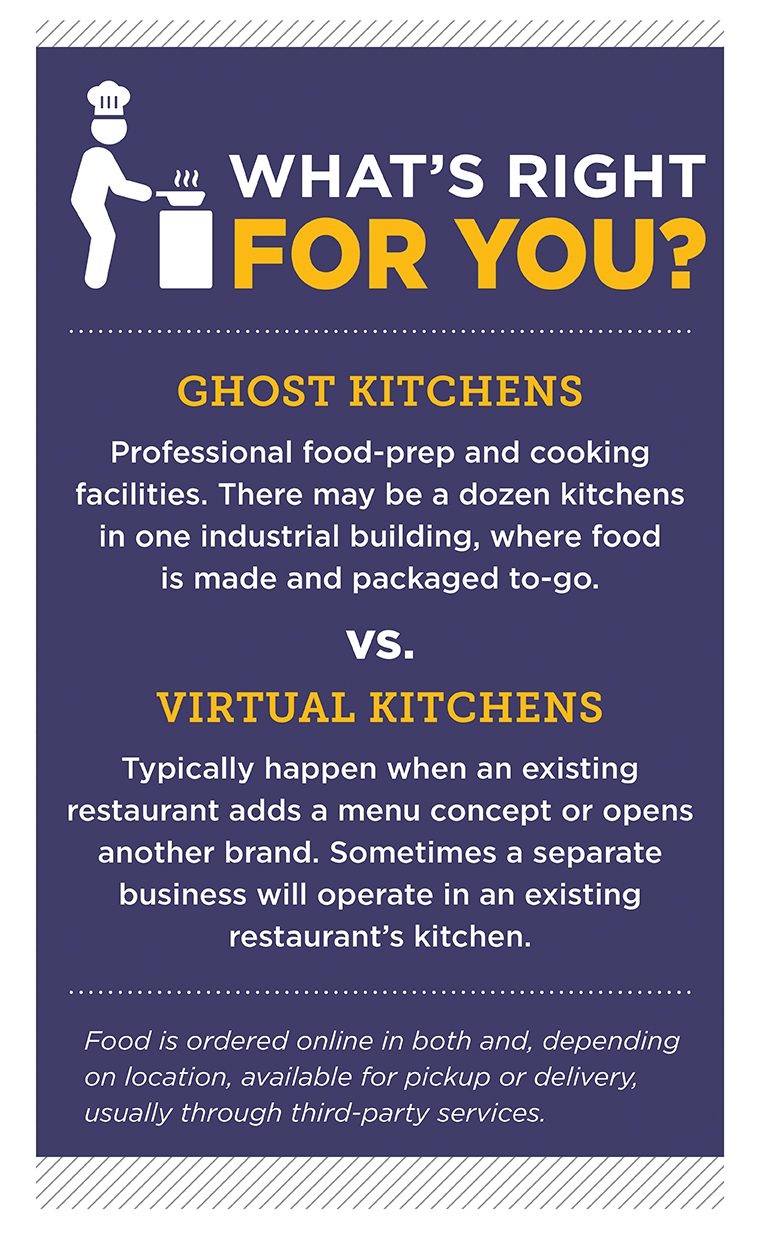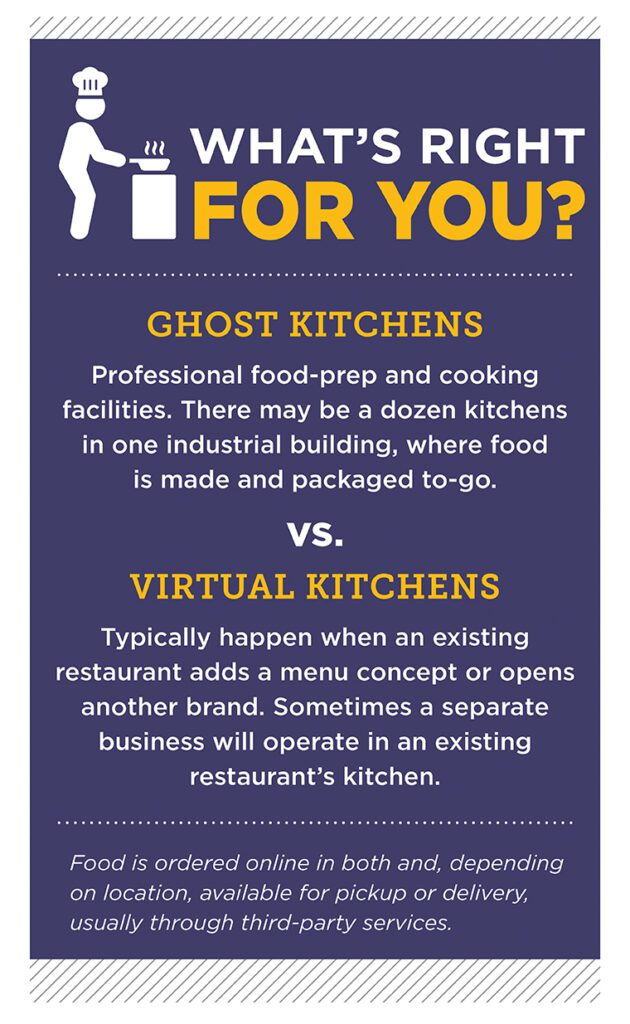Two years ago, the restaurant industry couldn’t stop talking about ghost kitchens. During the past two years, nearly every restaurant became one.
With limited seating or closed dining rooms, back of house rose to the forefront. Online was a lifeline. Takeout and delivery became the customer experience. In short, survival meant dabbling in the ghost kitchen or virtual kitchen space.
They won’t likely vanish anytime soon. Three Gordon Food Service® experts weighed in:
- “The pandemic moved the conversation ahead about five years.” – Darren Lexa, Calgary, Alberta-based Culinary Specialist.
- “I think this is only going to grow.” – Eric Schamp, Indianapolis-based Business Solutions Specialist.
- “Ghost kitchens are going to continue as an industry disruptor.” – Gareth Berg, Milton, Ontario-based Business Solutions Specialist.
Recognize the advantages
As off-premise dining grows and a younger demographic embraces technology, speed and convenience, restaurants sense a ghost kitchen opportunity.
“All they really need to come up with is the concept,” said Amina Gilani, co-founder and CEO of Sociavore, an all-in-one website and e-commerce platform for restaurants. “You don’t have to staff or maintain a dining room because technology becomes your restaurant door.”
With a menu seen only online, gone are time-consuming, costly paper menus. Offerings and pricing can change quickly as product availability, pricing or staff capabilities fluctuate, she adds.
Another advantage is a simplified menu. “You don’t need to sell appetizers, salads or complicated entrées,” Schamp said. “Chili’s started up a ghost kitchen that just sells wings–all you need are two or three items you can execute that are profitable and travel well.”
One example is BuffaLouie’s, Schamp notes. The Bloomington, Indiana wings, subs and sandwiches restaurant opened a virtual kitchen concept making bagels. Gables Bagels, available for pickup only inside BuffaLouie’s, proved so popular it will soon become a brick-and-mortar location.
Even as restaurants return to dine-in service, ghost kitchens and virtual kitchens offer another revenue stream, Berg points out. “They can even be a place to try out new products before committing to them.”
Be aware of challenges
Ghost/virtual kitchens only work when you understand food cost to profitability in your own restaurant, Schamp and Lexa agree. Without a solid business foundation, you’ll just make more work instead of more money. Areas to watch include:
Space, equipment and staff. It’s easy to overwhelm the current kitchen and staff. A virtual concept may require more storage, prep area or appliances. It could require more staff, different scheduling or special training.
You no longer just need a fryer guy, but you may need a chicken chef for three different concepts,” Berg said. “A cross-trained staff really helps.”
Foods that travel well. When building a ghost/virtual kitchen menu, consider the consumer’s point of view. It’s more than keeping hot or cold foods at temperature. How do they look and taste upon delivery?
You have to be creative,” Gilani said. “A steak is really great hot off the grill, but a steak taco bowl is better for carryout.”
Meal kits, with ingredients foodies can prepare at home, are an alternative, she says. A Toronto ramen restaurant sells subscriptions, and packages arrive with instructions and a QR code linking to a music playlist.
Technology, delivery and marketing. A robust website or e-commerce platform is a must, Gilani explains. You can sign with a third-party delivery service, but you might not draw enough traffic.
“Also, delivery apps can remove about 20-30% of your margin, and they don’t share guest data,” she said. “You give away a lot of margin and don’t know who your guests are.”
Because consumers can only find your business online, marketing is critical for growth, Schamp says. You can advertise through social media, billboards, etc., but Lexa suggests using branded packaging.
“You’ll need good packaging so your food travels well. Make sure it arrives with your name on it,” he said. “GFSImpress is a great option for operators to get involved in branding their own operation.”












